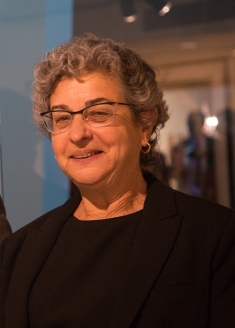“What the Glass Transition Means to Me” 2023 Darshana and Arun Varshneya Frontiers of Glass Science Lecture

Dr. Lisa C. Klein
Distinguished Professor and Chair, Materials Science and Engineering
Rutgers University
Abstract: Anyone working with glass, from conventional silicate glasses, to metallic glasses, chalcogenide glasses, polymer glasses and simple organic liquid glasses, knows about the universal concept of the glass transition. All classes of glass exhibit a transition that is characterized using calorimetry or viscometry, and in many cases, molecular modeling. This fascinating transition that cannot be defined by equilibrium thermodynamics is described instead in terms of kinetics, structural relaxation, and inability to crystallize. To add to this mystery, there is the glass transition in sol-gel derived glasses and organic-inorganic gels. Especially in so-called melting gels that exhibit a glass transition at or below room temperature, and undergo reversible softening until final consolidation around 200°C, it is difficult to pin down exactly what is going on at the glass transition. By comparing behavior in melting gels to other systems, both organic and inorganic as well as composites, it is possible to draw analogies. Some speculation is offered in order to initiate a dialog and further this fascination with the glass transition.
Biography: Dr. Lisa C. Klein received her PhD and SB degrees from the Massachusetts Institute of Technology in Materials Science and Engineering. In 1977, she joined the Department of Ceramic Science & Engineering, later named MSE. She has held visiting faculty positions at the University of Grenoble, Sandia National Laboratories and the Hebrew University of Jerusalem. She also served on the National Materials Advisory Board and was an Editor of the Journal of the American Ceramic Society from 1998-2019. Her research focuses on sol-gel processing, particularly sol-gel applications in electrolytes, membranes and nanocomposites. More recently, she has studied sol-gel processing of organic-inorganic hybrids and their behavior in corrosion coatings and surface textures. She is a Distinguished Life Member of the American Ceramic Society, a Fellow of the Society of Glass Technology, and a Member of the World Academy of Ceramics. She received the Life Achievement Award of the International Sol-Gel Society in 2017.